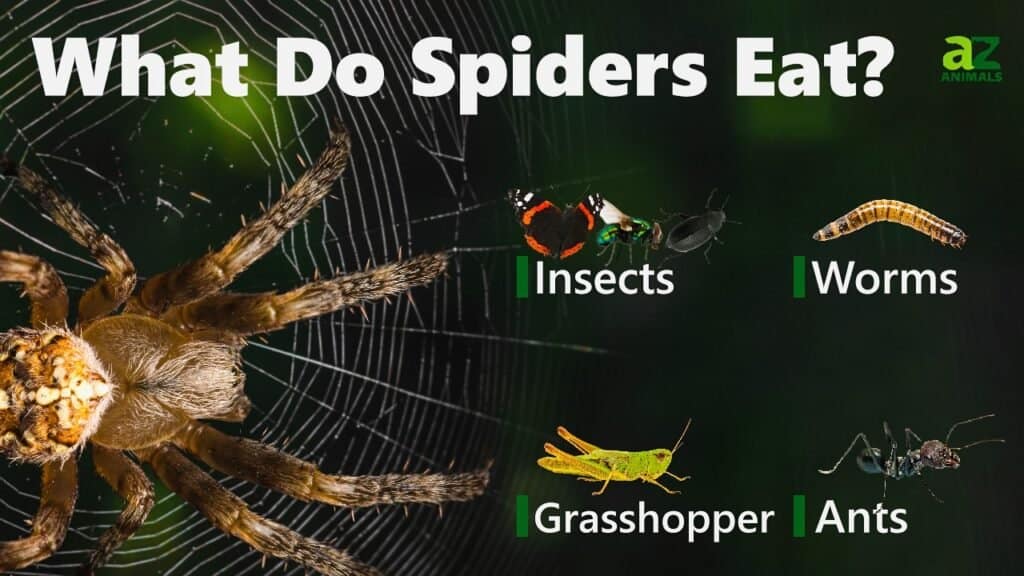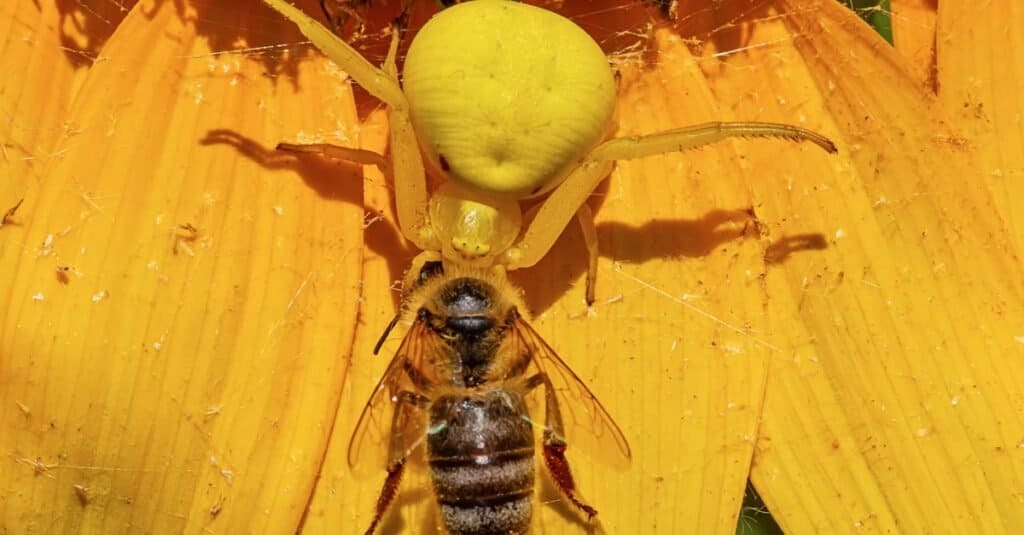Whether a person thinks that they’re fascinating marvels of evolution or so creepy that they can’t bear to be in the same room with one, spiders are an invaluable part of any ecosystem. They keep nature in balance by devouring harmful insects, including the ones people consider pests, whose numbers might otherwise be overwhelming. In turn, they are food for other predators, including humans in some cases.
Spiders are found all around the world save Antarctica. There are nearly 50,000 species that belong to 129 families. Though some people believe so, spiders aren’t insects, even though both animals belong to the Arthropoda phylum. They are arachnids, which means they have four pairs of legs, lack wings and antennae, and have two as opposed to the three body parts that insects have. Those body parts are the cephalothorax and the abdomen.
The abdomen possesses spinnerets that produce silk, even though not all spiders spin webs. Like insects, they have jaws, but the jaws of most spiders have fangs. Those fangs deliver venom. Most spider venom isn’t dangerous to humans, but they do a very good job of paralyzing and partially digesting their prey. Read on to learn what’s on the spider’s diet.

What Foods Do Spiders Eat?
First, not all spiders are strict carnivores. The beautiful green, gold, and red striped Bagheera kiplingi of Central America eats structures called Beltian bodies from acacia trees. They also eat nectar and ant larvae, and if they’re really hungry, they’ll eat each other. Though Bagheera kiplingi was described in 1896 scientists still don’t know how it eats Beltian bodies, which are rich in proteins and fat.
Most spiders are known to eat insects, while others eat nectar, seeds, pollen, honeydew, leaf material, silk from their webs, and dead arthropods. Like other animals that molt, many species eat their shed exoskeleton. These food items give the spider a break from having to hunt and subdue sometimes dangerous prey. They also don’t make the animal expend the energy it takes to make venom and silk.
There’s a surprising variety of animals that spiders get from predation. They are not all hapless insects! Here is a list of what spiders eat:
- Insects such as mosquitoes, moths, cockroaches and flies.
- Centipedes, mites and other arachnids, even their conspecifics.
- Worms
- Snails
- Amphibians
- Small lizards
- Small birds
- Small bats
- Small fish
Of course, the lizards and other vertebrates are taken by big spiders and probably not often. Even the Goliath bird-eating spider doesn’t eat birds all the time. Its usual diet consists of worms and larger insects, frogs and toads, snakes and lizards.
It is true that the females of some species of spider eat the male after they mate. Males sometimes get around this by offering the female a fly or other prey that she’ll eat while he mates with her.

How Do Spiders Hunt Prey?
Many spiders don’t exactly hunt but spin webs to catch their prey. The prey, usually an insect, bumbles into the web, and the spider bites it then wraps it in silk. It might start to eat the prey right there or cache it for later.
Fishing spiders spend nearly all of their lives in water and construct webs shaped like diving bells. These bells are filled with air, and the spider lives inside of it the way its terrestrial cousins live in their webs. When prey brushes against the bell or its anchoring threads, the spider snatches it.
Other spiders weave tiny webs that they use as nets. They hold the webs in their first pair of legs and catch their prey in them. Some species let the web go when prey enters it, while others hold on to the web to trap their prey. There are also spiders that make bolas. These are adult females that belong to the Mastophora genus. They create a line of silk with a blob of sticky silk at one end to catch moths. Not only this, but the silk smells like moth pheromones. The males and Mastophora spiderlings just mimic the pheromones and grab the moth with their front legs.
Other spiders use the trapdoor plan. They live in burrows and construct trapdoors that are attached to silk threads. When prey walks over these threads, the spider is alerted, shoots out and grabs the prey.
Wolf spiders and jumping spiders actually hunt down their prey. Because of this, these creatures have excellent vision, and wolf spiders in particular are colored to match their environment. It can be very hard to see a brown and tan wolf spider against a sandy background. Some seem smart enough to lure prey out of wherever they’re hiding. Nature has even designed some spiders to mimic their prey. Ant mimicking jumping spiders look and behave very much like ants, the better to infiltrate their nests and grab either ants or the aphids they farm. Interestingly, scientists believe that ant mimicry developed so that the spider wouldn’t be preyed upon by predators that eat spiders.
When a jumping spider finds a potential prey, it might stalk the prey for a while, then orient itself, lay down a drag line and leap.
Crab spiders wait on flowers to ambush their prey. They can even change their color to match the color of the flower. Crab spider venom is potent, so it can successfully catch animals much bigger than itself.

r.
©Nenad Nedomacki/Shutterstock.com
What Animals Eat Spiders?
For creatures that can get around or are not sensitive to its venom, the spider is a sought-after part of the diet. Even humans eat spiders. The Goliath birdeater spider is eaten after its irritating hairs are singed off, and it’s wrapped in banana leaves and roasted. It’s supposed to taste like shrimp. Other spiders on the human menu are the Thailand black spider and the golden orb-weaving spider, which is said to taste like foie gras. Other animals that eat spiders are:
- Insectivorous birds such as sparrows and bluebirds
- Lizards
- Tarantula hawks. These wasps don’t actually eat the spider but paralyze it and drag it to their burrow to feed their larva.
- Centipedes
- Other spiders
- Scorpions
- Monkeys
- Ticks
- Insects such as praying mantises
- Amphibians
Summary
While many people find spiders scary and creepy, they are essential to a healthy ecosystem. The greatest threat to spiders is from humans spraying pesticides. Ironically, using pesticides actually leads to an increased number of unwanted insects because spiders can’t reproduce as fast as their prey. When someone sprays an insecticide, it kills everything. However, unwanted insects such as flies, breed much faster than spiders. They repopulate themselves at almost immediately while spiders do so slowly. The flies are able to use this time to reproduce without being hunted. If you want to keep unwanted bugs out of your home, you should encourage spiders to take up residence.
Up Next…
- Common House Spider These guys are harmless to humans and they kill pests. If they move into a corner of your house you might want to let them stay. Check them out here.
- Spider Check out some interesting facts about spiders and learn more about them here.
- Is the Spider an Insect? Are spiders in a class of their own? Check out this article to find out.
The photo featured at the top of this post is © Cathy Keifer/Shutterstock.com
Thank you for reading! Have some feedback for us? Contact the AZ Animals editorial team.






